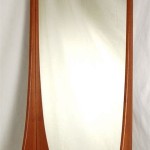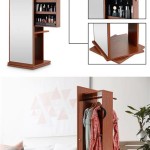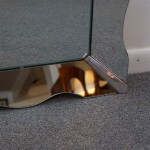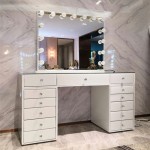Hanging Bathroom Mirrors: A Comprehensive Guide
Bathroom mirrors are essential fixtures, serving both functional and aesthetic purposes. They provide the necessary reflection for daily grooming routines and contribute significantly to a bathroom's overall design and feel. Properly hanging a bathroom mirror ensures safety, functionality, and enhances the room's visual appeal.
Several factors influence the choice of mirror and its placement. These considerations include the size and layout of the bathroom, the existing lighting, and the desired style. A large mirror can make a small bathroom appear more spacious, while a smaller, decorative mirror might be more appropriate for a powder room. The mirror's shape and frame should complement the bathroom's overall design aesthetic.
Before beginning the installation process, gather the necessary tools and materials. These typically include a measuring tape, a level, a pencil, a drill with appropriate drill bits for the wall type, wall anchors (if necessary), screws designed for hanging mirrors, a stud finder, and safety glasses. Having everything readily available streamlines the hanging process.
Determining the ideal height for the mirror is crucial for usability. The mirror's center should generally be at eye level for the average user. However, this can be adjusted slightly based on the heights of the primary users of the bathroom. Marking the desired height on the wall with a pencil provides a clear guide during installation.
Locating wall studs provides the most secure mounting points for heavier mirrors. Use a stud finder to identify the studs behind the wall where the mirror will be hung. Marking the stud locations ensures the screws are anchored into solid framing for maximum support and stability. This is particularly important for larger or heavier mirrors.
The type of wall material dictates the appropriate hanging hardware. Drywall requires wall anchors to provide a secure hold, while tile may require specialized drill bits and anchors. Consult the mirror manufacturer's instructions and hardware recommendations for specific guidance. Using the correct hardware prevents the mirror from falling and causing damage or injury.
Once the desired location is marked and the appropriate hardware selected, begin the installation process. Drill pilot holes at the marked locations, ensuring the drill bit is the correct size for the screws and wall anchors. If using wall anchors, insert them into the pilot holes according to the manufacturer's instructions. Then, carefully align the mirror's mounting hardware with the pilot holes or anchors and secure it with screws.
Using a level throughout the installation process is paramount. Check the mirror's levelness both horizontally and vertically after attaching the first screw but before fully tightening it. This allows for adjustments to ensure the mirror hangs straight. Re-check the levelness after all screws are tightened.
Different types of mirrors have different hanging mechanisms. Some mirrors have D-rings or wire hangers on the back, while others have keyhole slots or mounting brackets. Understanding the specific hanging mechanism of the chosen mirror is essential for selecting the appropriate hardware and ensuring proper installation.
Wiring and plumbing located behind the wall pose potential hazards during installation. Exercise caution when drilling into walls, especially in older homes where wiring and plumbing may not be clearly marked. Using a stud finder can help avoid drilling into these areas. If unsure, consult a professional electrician or plumber.
Lighting plays a significant role in the functionality and aesthetics of a bathroom mirror. Consider the placement of existing light fixtures and whether additional lighting is necessary. Sidelights flanking the mirror provide even illumination for grooming tasks. Overhead lighting can also be effective, but avoid positioning it directly above the mirror, which can create shadows.
Framing a bathroom mirror can enhance its visual appeal and tie it into the overall bathroom design. Frame materials range from wood and metal to plastic and composite materials. Choose a frame style and finish that complements the existing décor, such as faucets, light fixtures, and other bathroom accessories.
Regular cleaning maintains the mirror's reflectivity and appearance. Use a glass cleaner specifically designed for mirrors to prevent streaking. Avoid abrasive cleaners, which can scratch the mirror's surface. Regularly wipe down the mirror with a soft cloth to remove dust and fingerprints.
Safety should always be a priority when hanging a bathroom mirror. Wear safety glasses to protect eyes from dust and debris during drilling. Ensure the mirror is securely mounted to prevent it from falling and causing injury. If working with electrical wiring, turn off the power to the circuit before beginning any work.
For exceptionally heavy mirrors or complex installations, consider consulting a professional handyman or contractor. They possess the expertise and tools to ensure a safe and secure installation, minimizing the risk of damage to the wall or the mirror itself.

How To Pick And Hang The Perfect Bathroom Mirror Roomhints

Suspended Mirror Bath

How To Pick And Hang The Perfect Bathroom Mirror Roomhints

Bathroom Floating Wall Decorative Suspended Mirrors Ceiling Mounted Mirror With Metal Hanging China Led Made In Com

Sayer Round Hanging Mirror Bathroom Design

Ceiling Suspended Vanity Mirrors Design Ideas

How To Hang A Mirror On Window 12 Bright Beautiful Examples Designed

Hanging Bathroom Mirror Hollywood Regency At Home In Arkansas

Bathroom Floating Wall Decorative Suspended Mirrors Ceiling Mounted Mirror With Metal Hanging China Led Made In Com

Space Solutions Hanging Mirrors Over Windows Mirror Contemporary Bathrooms Ceiling








